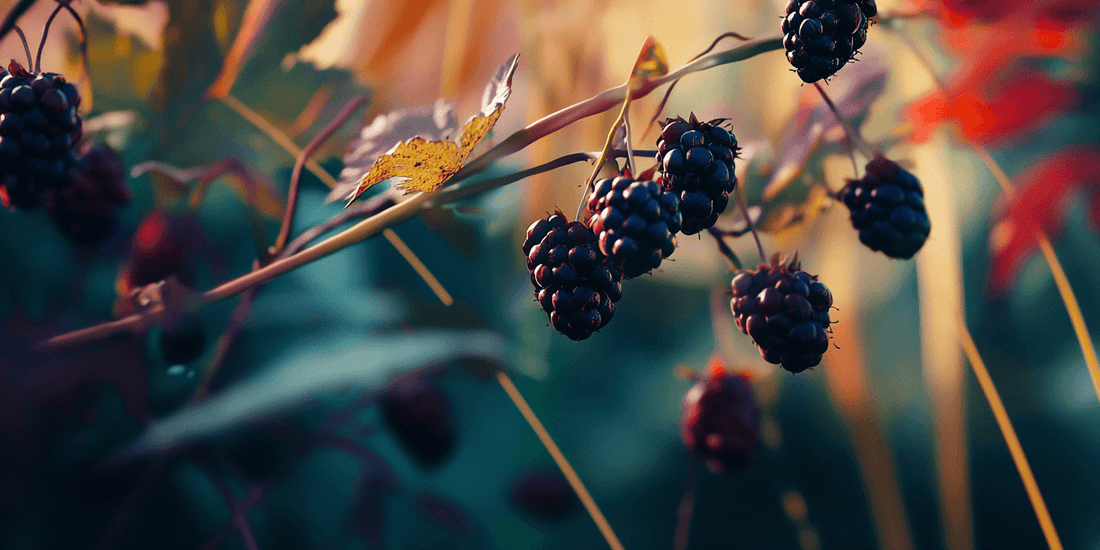Blackberries are a versatile and rewarding fruit to grow, offering lush greenery and bountiful harvests to gardeners and farmers alike. Whether you’re planting blackberry bushes for the first time or refining your techniques, this guide will walk you through the essential steps for success. From preparing the soil to understanding blackberry spacing and watering schedules, we’ll cover everything you need to know about growing blackberries sustainably.
Soil Preparation for Blackberries
The foundation of any thriving blackberry bush is healthy, well-prepared soil. Blackberries prefer slightly acidic soil with a pH range of 5.5 to 7.0. Conducting a soil test before planting is highly recommended to determine its pH and nutrient levels. Many agricultural extension offices offer soil testing services, providing precise recommendations tailored to your local conditions.
For the best soil for blackberries, focus on enhancing drainage and fertility. Blackberries thrive in loamy, well-draining soil. If your soil is heavy clay, consider amending it with organic matter such as compost or well-aged manure to improve texture and drainage. Conversely, sandy soils may benefit from adding organic mulch to retain moisture.
In organic gardening, cover crops such as clover or vetch can be grown in advance to enrich the soil with nitrogen. These crops can be tilled under a few weeks before planting blackberry bushes, providing a nutrient-rich environment.
Planting Techniques for Blackberries
Understanding how to plant blackberries properly can make a significant difference in their growth and productivity. Start by choosing certified disease-free plants from reputable sources to ensure a healthy beginning. Bare-root blackberry plants should be planted in early spring while they are dormant, whereas container-grown plants can be transplanted throughout the growing season.
Begin by digging a hole twice as wide as the root ball and deep enough to accommodate the roots without bending or crowding them. Place the plant in the hole, ensuring the crown sits just above the soil level, then fill the hole with soil, gently firming it down. Water thoroughly to settle the soil and eliminate air pockets.
Incorporating organic fertilizers like bone meal or fish meal at the time of planting can support early root development. Avoid using synthetic fertilizers, as they may disrupt the delicate balance of organic soil ecosystems.
Spacing Requirements for Blackberry Bushes
Proper blackberry spacing is crucial for healthy growth and optimal yields. Crowded plants can lead to poor air circulation, increasing the risk of fungal diseases. For upright blackberry varieties, such as 'Navaho' or 'Arapaho,' space plants approximately 3 to 4 feet apart in rows. Trailing varieties, like 'Marionberry' or 'Boysenberry,' require more room, with plants spaced 5 to 8 feet apart.
When planting multiple rows, ensure at least 8 to 10 feet between rows to allow space for maintenance, harvesting, and trellising. Installing a trellis system at the time of planting is highly beneficial, especially for trailing varieties, as it supports the canes and prevents them from sprawling on the ground.
In regions prone to high humidity or heavy rainfall, slightly wider spacing may further reduce disease pressure by improving airflow between plants.
Sunlight Needs for Blackberries
Blackberries thrive in full sun, requiring at least six to eight hours of direct sunlight daily. Insufficient sunlight can lead to reduced fruit production, leggy growth, and increased susceptibility to pests and diseases. Selecting a planting site with maximum exposure to sunlight is a critical step in blackberry cultivation.
While blackberries are relatively adaptable, they are less productive in partial shade. If full sun is not available, ensure the plants receive morning sunlight to help dry dew from the foliage and reduce fungal risks.
To protect plants in hot climates, consider using organic mulch to moderate soil temperatures and retain moisture, ensuring the plants don’t experience heat stress.
Watering Schedules for Blackberries
Watering blackberries correctly is essential for maintaining healthy growth and achieving high fruit yields. Newly planted blackberry bushes require consistent watering to establish their root systems. Provide about 1 to 2 inches of water per week, either through rainfall or supplemental irrigation, during the first growing season.
Once established, blackberries are relatively drought-tolerant but will produce the best fruit when provided with consistent moisture. Drip irrigation systems are ideal, as they deliver water directly to the root zone while minimizing evaporation and leaf wetness, which can lead to fungal diseases.
When watering blackberries, aim to maintain even soil moisture without allowing the roots to become waterlogged. Adding a layer of organic mulch around the base of the plants can help conserve soil moisture, suppress weeds, and improve soil health over time.
Sustainable and Organic Growing Practices
For gardeners committed to sustainable practices, blackberries offer a fantastic opportunity to grow fruit organically. Avoid synthetic pesticides and herbicides, instead opting for integrated pest management strategies. Encouraging beneficial insects like ladybugs and lacewings can naturally control aphids and other common pests.
To further enhance your blackberry growing conditions, consider planting companion plants such as marigolds or garlic, which may help deter pests. Rotating crops and maintaining a diverse planting area can reduce the likelihood of soilborne diseases and pests establishing themselves.
Incorporating a long-term strategy for soil health is also essential. Adding compost or other organic amendments annually can replenish nutrients and support the diverse microbial community that underpins a thriving garden.
In Summary
Planting and growing blackberries is a rewarding endeavor that combines the joys of gardening with the promise of delicious, homegrown fruit. By focusing on soil preparation, using proper planting techniques, adhering to recommended spacing requirements, providing sufficient sunlight, and maintaining consistent watering schedules, you can cultivate healthy blackberry bushes that yield bountiful harvests year after year.
Whether you’re an experienced grower or new to blackberry cultivation, embracing organic and sustainable practices ensures that your garden contributes positively to the environment while producing nutritious fruit. With careful planning and a commitment to nurturing your plants, your blackberry patch will flourish and provide enjoyment for seasons to come.

